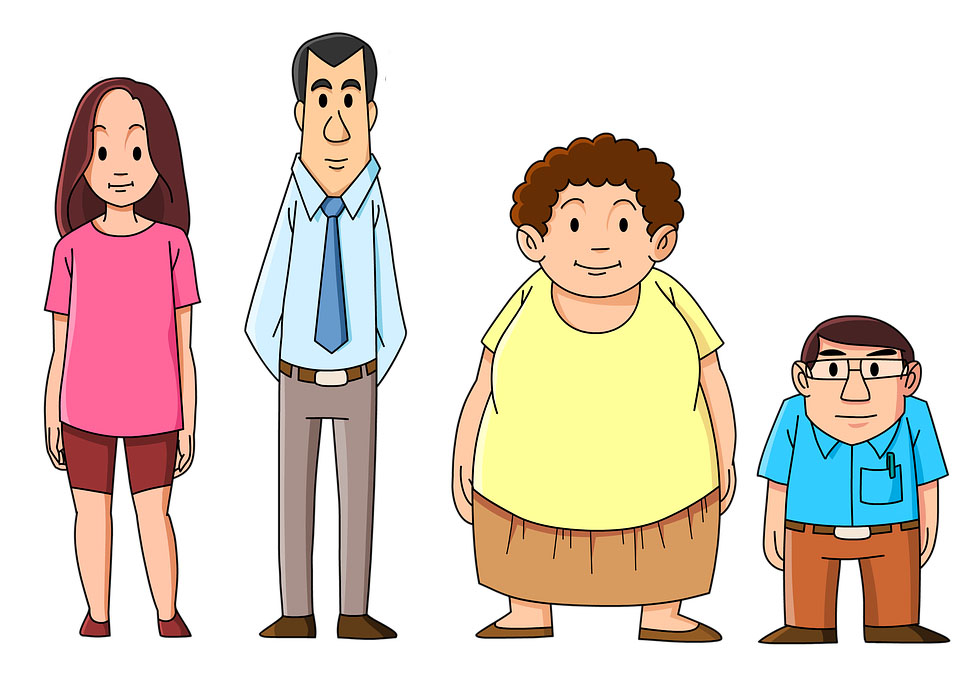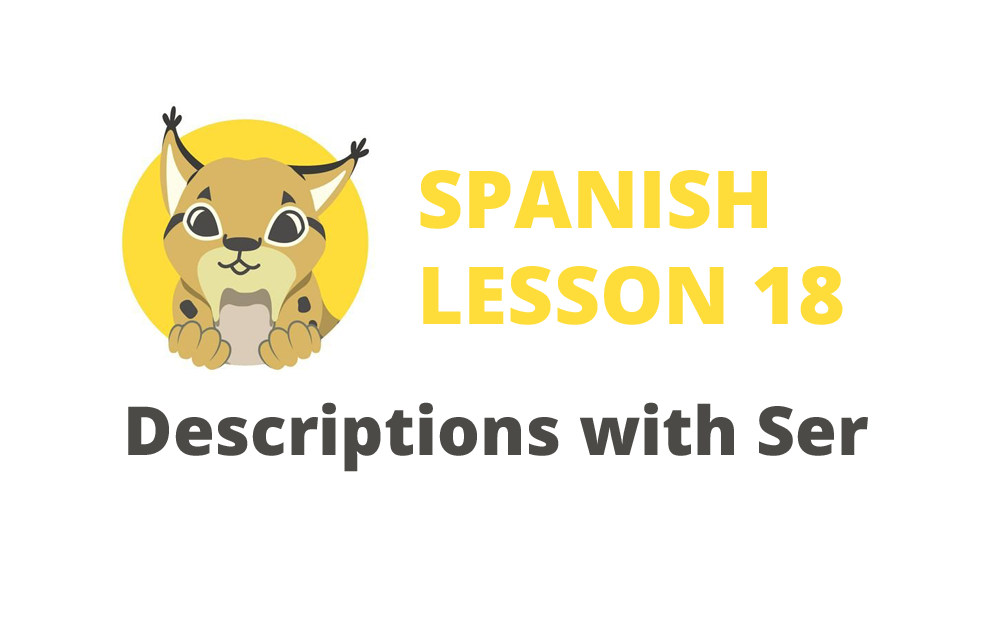This is the eighteenth lesson in our beginner level Spanish course and we will look at Spanish descriptions with Ser.
We first looked at the Spanish verb Ser in Lesson 4 of this course and learned that Ser (To be) is a fundamental verb (action/doing word) that is generally used for describing permanent things such as name and nationality. In Lesson 11 we compared Ser and Estar, which are both the verb To be, and learned that Estar is generally used for describing non-permanent things such as location and feelings. In this lesson we will practice making Spanish Descriptions with Ser that are considered ‘permanent’.
Describing physicality
We use El verbo Ser when we want to describe physical appearance because physicality is generally non-changing.
To practice this first we will learn some useful new adjectives (describing words):
Alto/a: Tall
Bajo/a: Short
Gordo/a: Fat
Delgado/a: Slim
Flaco/a: Thin
Fuerte: Strong
Débil: Weak
Pequeño/a: Small
Grande: Big

Let’s practice now with some example sentences:
Soy alto: I am tall
No, eres bajo: No, you are short
¿Cómo es Antonio?: How is Antonio?
Él es alto y delgado: He is tall and slim
Tu madre es gorda: Your mother is fat
No, ella no es gorda. Es fuerte: No, she is not fat. She is strong
Vosotros sois fuertes: You are strong
Gracias. Sí, somos muy fuertes: Thanks. Yes, we are very strong
Los noruegos son altos: Norwegians are tall
Los peruanos son bajos: Peruvians are short
You can see that these are all Spanish Descriptions with Ser. (soy, eres, es, somos, sois, son). It should be pointed out that it is also possible to make similar descriptions with Estar if you specifically wish to make the point that your description is temporary.
For example:
Hola hijo. Estás muy alto: Hi son. You are very tall (Estás rather than Es could be used here to emphasise that the child is growing. Once someone has stopped growing the description would have to be with Es)
Roberto está gordo: Roberto is fat (Está rather than Es could be used here to emphasise that Roberto is currently fat but isn’t usually)
Describing personality
We use El verbo Ser when we want to describe personality because personality is generally non-changing.
To practice this first we will learn some more useful new adjectives:
Tranquilo/a: Calm
Nervioso/a: Anxious
Amable: Kind
Cruel: Unkind
Simpático/a: Friendly
Antipático/a: Unfriendly
Ordenado/a: Tidy
Desordenado/a: Untidy
Trabajador/a: Hard-working
Vago/a: Lazy
Organizado/a: Organised
Desorganizado/a: Disorganised
Let’s practice now with some example sentences:
Soy ordenada: I am tidy
No, eres desordenada: No, you are untidy
¿Sebastián es tranquilo?: Is Sebastián calm?
Sí, él es tranquilo: Yes, he is calm
¿Son amables?: Are they friendly?
Sí, ellos son muy amables: Yes, they are very friendly
Somos organizadas: We are organised
¡Qué! No, sois organizadas. Sois muy desorganizadas: What! No, you are not organised. You are very disorganised
Again, it is also possible to make similar descriptions with Estar if you specifically want to emphasise that the thing you are describing is temporary.
For example:
Estás tranquilo ahora: You are calm now (Estás rather than Eres could be used here to emphasise that the person is unusually calm in that moment)
¿Por qué estás tan simpática?: Why are you so friendly? (Estás rather than Eres could be used here to emphasise that the person is being unusually friendly)
That’s all for this lesson about the Descriptions with Ser. In our next lesson we will look at descriptions with Estar so that we understand better the concept of temporary and permanent descriptions.
